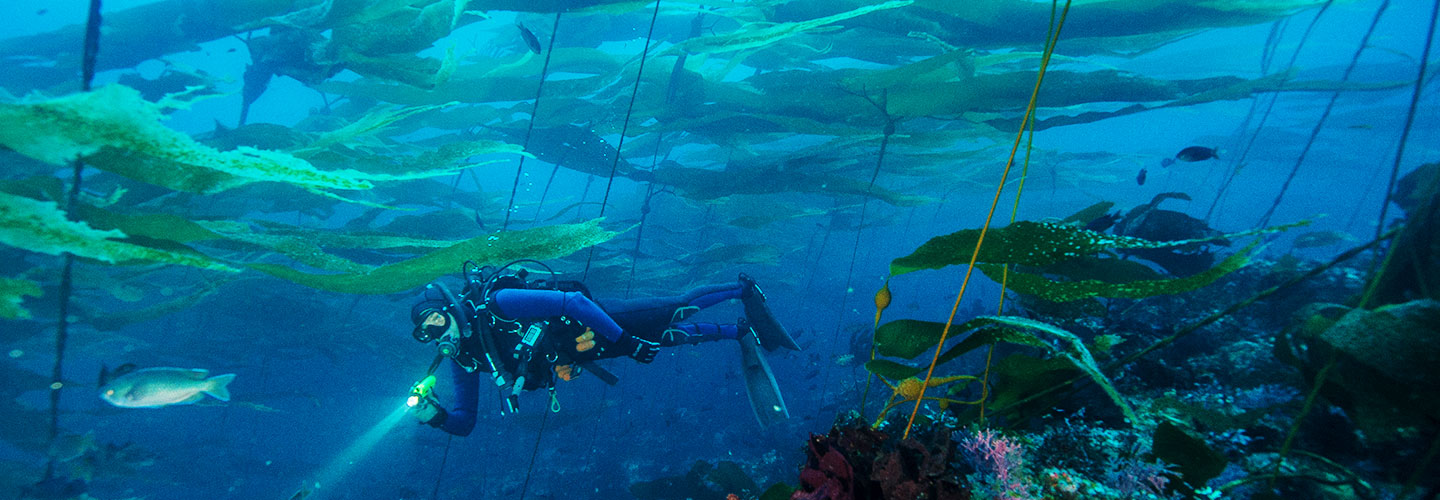Jim McMahon/Mapman
Joshua Sprague and his team finish loading up the boat for a week at sea. Then they set sail for the Channel Islands, about 30 miles off the coast of Ventura, California. But the team of marine biologists won’t explore the islands. Instead they set anchor off the coast, shimmy into their scuba gear, and dive underwater to check on the kelp below.
Kelp is a large, greenish brown seaweed. In the waters off the Channel Islands, thousands of kelp plants grow in enormous underwater forests. These kelp forests are one of the most productive ecosystems in the world. They’re home to more than 1,000 species of marine algae, plants, and animals.
Scientists like Sprague began monitoring the forests’ health in 1983 for the Channel Islands National Park Kelp Monitoring Program. Divers have returned to the same areas for over 30 years to collect data.
Joshua Sprague and his team load up a boat. They’re preparing for a week at sea. They set sail for the Channel Islands, about 30 miles off the coast of Ventura, California. Sprague and his team are marine biologists. They’re not planning to explore the islands on land. Instead they set anchor off the coast. They shimmy into their scuba gear. Then they dive underwater to check on the kelp below.
Kelp is a large, greenish-brown seaweed. Thousands of kelp plants grow in the waters off the Channel Islands. They form enormous underwater forests. These kelp forests are home to more than 1,000 species of marine algae, plants, and animals. That makes them one of the busiest ecosystems in the world.
Scientists like Sprague began checking on the forests’ health in 1983. They’re part of the Channel Islands National Park Kelp Monitoring Program. Divers have returned to the same areas for over 30 years. They collect data on every trip.

